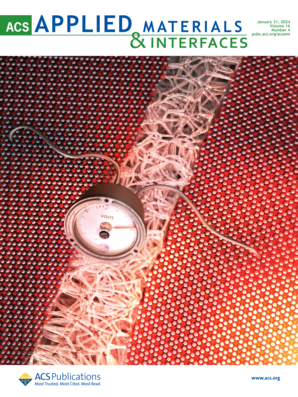Micro-Nano Convergence-Driven Radiotheranostic Revolution in Hepatocellular Carcinoma
IF 8.3
2区 材料科学
Q1 MATERIALS SCIENCE, MULTIDISCIPLINARY
引用次数: 0
Abstract
Radiotherapy, as an important means of treating hepatocellular carcinoma (HCC), has shown unique therapeutic advantages, especially in patients who are unable to undergo surgery or transplantation. It mainly includes external radiotherapy, transarterial radioembolization and intratumoral radioactive particle implantation. However, under the influence of factors such as the hypoxic characteristics of the liver tumor microenvironment and the radioresistance of tumor cells, the effect of radiotherapy may be unstable and may cause side effects, affecting the quality of life of patients. In recent years, with the development of nanotechnology, drug delivery systems based on micro-nanomaterials have provided new solutions for improving the effect of radiotherapy for HCC. Despite this, the application of micro-nano drug delivery systems in the treatment of HCC still faces some challenges, mainly including the in vivo safety and in vivo metabolism of micro-nano materials. This article reviews the latest progress of micro-nano materials in the treatment of HCC, especially their application in radiosensitization and their clinical translation potential. This article systematically analyzes the role of micro-nanomaterials in external or internal radiotherapy sensitization and radioimmunotherapy and explores the advantages of micro-nanomaterials in improving the treatment effect of HCC.

微纳聚合驱动的肝细胞癌放射治疗革命
放疗作为治疗肝细胞癌(HCC)的重要手段,具有独特的治疗优势,特别是对于无法进行手术或移植的患者。主要包括外置放疗、经动脉放射栓塞和瘤内放射性粒子植入。然而,在肝脏肿瘤微环境的缺氧特性和肿瘤细胞的放射抵抗等因素的影响下,放疗效果可能不稳定,并可能产生副作用,影响患者的生活质量。近年来,随着纳米技术的发展,基于微纳米材料的给药系统为提高肝癌放疗效果提供了新的解决方案。尽管如此,微纳给药系统在HCC治疗中的应用仍面临一些挑战,主要包括微纳材料的体内安全性和体内代谢问题。本文综述了微纳材料在肝细胞癌治疗中的最新进展,重点介绍了微纳材料在放射增敏中的应用及其临床转化潜力。本文系统分析了微纳米材料在体外或内放疗致敏和放射免疫治疗中的作用,探讨了微纳米材料在提高HCC治疗效果方面的优势。
本文章由计算机程序翻译,如有差异,请以英文原文为准。
求助全文
约1分钟内获得全文
求助全文
来源期刊

ACS Applied Materials & Interfaces
工程技术-材料科学:综合
CiteScore
16.00
自引率
6.30%
发文量
4978
审稿时长
1.8 months
期刊介绍:
ACS Applied Materials & Interfaces is a leading interdisciplinary journal that brings together chemists, engineers, physicists, and biologists to explore the development and utilization of newly-discovered materials and interfacial processes for specific applications. Our journal has experienced remarkable growth since its establishment in 2009, both in terms of the number of articles published and the impact of the research showcased. We are proud to foster a truly global community, with the majority of published articles originating from outside the United States, reflecting the rapid growth of applied research worldwide.
 求助内容:
求助内容: 应助结果提醒方式:
应助结果提醒方式:


